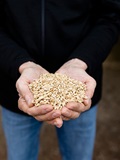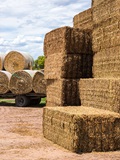Bega Valley
20 May 2020
| Date | Bega 23 | Bega 22 | Bega 5YA |
|---|---|---|---|
| 06-Jan-23 | 341 | 285 | 338 |
| 13-Jan-23 | 348 | 285 | 338 |
| 20-Jan-23 | 353 | 285 | 349 |
| 27-Jan-23 | 353 | 285 | 352 |
| 03-Feb-23 | 353 | 285 | 354 |
| 10-Feb-23 | 353 | 285 | 354 |
| 17-Feb-23 | 356 | 285 | 354 |
| 24-Feb-23 | 358 | 285 | 354 |
| 03-Mar-23 | 358 | 285 | 355 |
| 10-Mar-23 | 358 | 285 | 353 |
| 17-Mar-23 | 358 | 285 | 353 |
| 24-Mar-23 | 358 | 285 | 353 |
| 31-Mar-23 | 358 | 285 | 345 |
| 07-Apr-23 | 358 | 285 | 345 |
| 14-Apr-23 | 359 | 285 | 345 |
| 21-Apr-23 | 360 | 285 | 345 |
| 28-Apr-23 | 360 | 285 | 338 |
| 05-May-23 | 360 | 285 | 338 |
| 12-May-23 | 360 | 284 | 338 |
| 19-May-23 | 360 | 283 | 338 |
| 26-May-23 | 360 | 283 | 349 |
| 02-Jun-23 | 365 | 288 | 350 |
| 09-Jun-23 | 360 | 288 | 350 |
| 16-Jun-23 | 358 | 288 | 350 |
| 23-Jun-23 | 355 | 288 | 350 |
| 30-Jun-23 | 350 | 288 | 350 |
| 07-Jul-23 | 340 | 288 | 357 |
| 14-Jul-23 | 335 | 291 | 375 |
| 21-Jul-23 | 330 | 293 | 376 |
| 28-Jul-23 | 320 | 293 | 385 |
| 04-Aug-23 | 320 | 293 | 396 |
| 11-Aug-23 | 315 | 293 | 400 |
| 18-Aug-23 | 313 | 293 | 413 |
| 25-Aug-23 | 310 | 293 | 413 |
| 01-Sep-23 | 310 | 293 | 413 |
| 08-Sep-23 | 293 | 403 | |
| 15-Sep-23 | 283 | 379 | |
| 22-Sep-23 | 283 | 379 | |
| 29-Sep-23 | 283 | 378 | |
| 06-Oct-23 | 283 | 378 | |
| 13-Oct-23 | 283 | 371 | |
| 20-Oct-23 | 288 | 371 | |
| 27-Oct-23 | 288 | 371 | |
| 03-Nov-23 | 288 | 358 | |
| 10-Nov-23 | 288 | 359 | |
| 17-Nov-23 | 300 | 362 | |
| 24-Nov-23 | 300 | 364 | |
| 01-Dec-23 | 304 | 353 | |
| 08-Dec-23 | 308 | 352 | |
| 15-Dec-23 | 318 | 354 | |
| 22-Dec-23 | 323 | 355 | |
| 29-Dec-23 | 335 | 360 |
Notes:
Change in price is the change since the last report. Hay quoted is sourced and delivered locally, GST exclusive unless stated otherwise. It should be noted that local prices quoted may not be the cheapest available, sourcing it from another region may be more affordable, and buyers are encouraged to evaluate all options. Prices are indicative to a mid-range shedded product, and based on the best indication of market value at the time of reporting. It should be noted there is a wide variation in quality of hay, prices for a mid-range product will not reflect the weighted average of trade. Prices will naturally vary based on the product quantity and quality, buyer/seller relationship and the size of the trade.The hay report has been commissioned by Dairy Australia to provide an independent and timely assessment of hay markets in each dairy region. This report is created using data provided by the Australian Fodder Industry Association (AFIA). It should be remembered that actual prices may vary for quality or other reasons. Whilst all reasonable steps have been taken to ensure the accuracy of the information contained in this report, Dairy Australia disclaims all liability to the fullest extent permitted by Australian law for any inadvertent errors and for any losses or damages stemming from reliance upon its content. Dairy Australia recommends all persons seek independent advice and, where appropriate, advice from a qualified advisor before making any decisions about changes to business strategy.
Commentary
- Little to no rainfall across the region this week, with falls of 5 -10mm of rain on average. Parts of the region are starting to dry out and are in need of rainfall.
- Rye grasses on irrigation are growing well but dry land grasses are beginning to struggle.
- In those areas still carrying water, farmers have been selectively sowing and fertilising on raised ground and slopes for pasture growth with crimson, shaftal and persian clover seed. Green feed continues to be in good supply in some areas across the region with most farmers feeding well on pastures.
- Mice activity continues to be reported in both paddocks and sheds, though not in great numbers. https://grdc.com.au/resources-and-publications/resources/mouse-management.
- There have been reports of rust on early sown grazing wheat, as well as oat crown and stem rust also confirmed in the mixed farming regions of southern NSW. https://grdc.com.au/search?query=rust
- The prices of inputs continue to be an issue especially Monoammonium phosphate (MAP) and urea, as well as the ongoing rising cost of fuel.
- There continues to be requests for donations from livestock farmers further north and there is the understanding this will continue for some time with the back-to-back rain events. Growers are either sending up supplies or arranging donation drives. However, costs are becoming a concern.
- Hay enquiries have risen even with the abundance of green feed available. Feedlot interest continues to be strong as they seek to secure winter feedstock. With much of the highest quality either sold or contracted. Shedded hay is in higher demand, due to the adverse weather conditions.
- Some change to pricing this week.
- Cereal hay: +$5 ($265 to $310/t). Prices increase this week.
- Lucerne hay: +/-0 ($480 to $520/t). Prices remain steady this week.
- Straw: +/-0 ($200 to $220/t). Prices remain steady this week.
- Pasture hay: +/-0 ($330 to $360/t). Prices remain steady this week.
- Please note: Unless stated otherwise, prices are per tonne, sourced and delivered locally. The price range indicated is for feeds of varying quality with the price range generally indicative of quality of feed. We recommend feed testing and viewing of fodder before purchase to be sure of the quality of feed.

